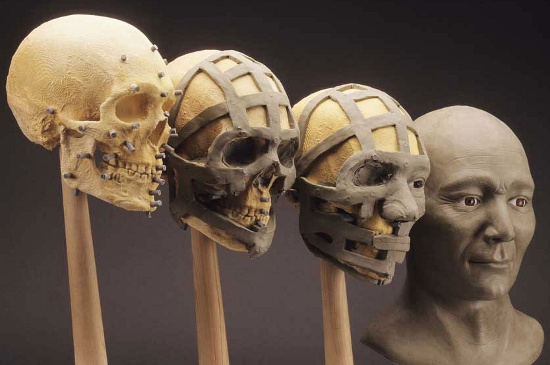If Mona Lisa's prototype skull laughs
A group of Italian scientists are planning to recombine the skull of Lisa Gherardini, a 15th-century Italian woman thought to be the prototype in Leonardo da Vinci's masterpiece Mona Lisa. The purpose of this is to come to the conclusion whether the mysterious smile in the painting is true of this woman.
No scientific research has confirmed that it can describe the smile from his own skull? But in fact, from the rest of the skull, it is still possible to create precise sketches of one's mouth. Because our lip corners are often based on the outer edge of the canine teeth, a skull box may indicate the width of the mouth. The angle and contact points between the upper and lower jaws are related to the way the lips touch. And an adult's enamel will tell about the thickness of the lips. If these characteristics do not coincide with the lines in Leonardo da Vinci's drawing, scientists can draw conclusive conclusions that Lisa Gherardini is not the "muse" of Leonardo da Vinci.
It would be difficult to prove that Mrs. Gherardini is the prototype for Mona Lisa's legendary smile. A human's skull says very little about how someone laughs. Many muscles control a smile in relation to software rather than bone, and each person's smile is a conditional reflex, rather than a natural product of bone structure.

Face regeneration techniques are expected to lift
the mysterious veil behind Mona Lisa's smile.
Over the past few decades, the forensic industry has taken a long step in face regeneration techniques. Scientists are now able to reconstruct the shape of someone's face, the position of the eye, the slope of the nose, or the jaw curve with an accuracy of several millimeters. The problem is that it is difficult to identify someone from a face that has been recreated from many features. Scientists have used medical scanning technology to create a three-dimensional image of the skull of a living person, but even that person's family member cannot be sure to recognize reconstructed face.
In a study carried out in 2001, Australian forensic anthropologists used renewable technologies to create 16 faces from four skulls, then challenged unselected observers to choose. photo of a person who died from a set of 10 photos. Eventually, observers failed. Participants in this trial identified only one of the 16 reconstructed faces mentioned above.

Other studies show that even acquaintances are not better than strangers in identifying reconstructed faces. Science has made tremendous progress over the past decade, but forensic scientists are still only more proficient at creating hypothetical images of human ancestors, rather than honest reconstructions. Modern face image.
Furthermore, the plan to re-create the real Mona Lisa's face will face other challenges. Gherardini was over 60 years old when she died (circa 1551). Facial reconstruction experts have had some techniques of "backward" someone's age, such as the top of the eyebrow, the most obvious characteristic of the elderly. But the important thing is that the Gherardini skull lacks teeth. If Gherardini's gums were bare when she died, that would undermine her intention to reproduce her mouth.
Finally, although Leonardo da Vinci has a reputation for editing and " manipulating " portraits, the Mona Lisa is still a painting. It is still unclear whether Leonardo wants to build a realist image work, or an iconic version of the theme. Moreover, Leonardo has been diligently working on this painting for many years, which makes it extremely difficult to faithfully reproduce every aspect of his 'muse' face.
- Why do ancient people taking portraits always cold and serious?
- Found the Mona Lisa's skull?
- Find the remains of Mona Lisa!
- Picture of the little Mona Lisa
- Identify Mona Lisa's
- There are two 'Mona Lisa'
- Discover the world's first painting of the Mona Lisa
- Netherlands: Successfully implanted 3D skull for a woman
- The 8 biggest mysteries in the Mona Lisa painting
- Mona Lisa's true identity
- Mona Lisa has syphilis?
- Leonardo used both fingers to paint the Mona Lisa
 The truth about the mysterious red-haired giant at Lovelock Cave
The truth about the mysterious red-haired giant at Lovelock Cave Inunaki Tunnel: The haunted road leading into Japan's 'village of death'
Inunaki Tunnel: The haunted road leading into Japan's 'village of death' The mystery of the phenomenon of human reflection before dying
The mystery of the phenomenon of human reflection before dying 6 mysterious phenomena, although science has been developed for a long time, still cannot be answered
6 mysterious phenomena, although science has been developed for a long time, still cannot be answered